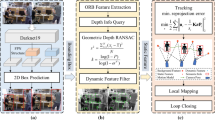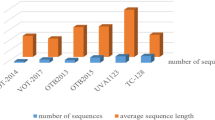Abstract
Target tracking applications of wireless sensor networks (WSNs) may provide a high performance only when a reliable collection of target positions from sensor nodes is ensured. The performance of target tracking in WSNs is affected by transmission delay, failure probability, and nodes energy depletion. These negative factors can be effectively mitigated by decreasing the amount of transmitted data. Thus, the minimization of data transfers from sensor nodes is an important research issue for the development of WSN-based target tracking applications. In this paper, a data suppression approach is proposed for target chasing in WSNs. The aim of the considered target chasing task is to catch a moving target by a mobile sink in the shortest time. According to the introduced approach, a sensor node sends actual target position to the mobile sink only if this information is expected to be useful for minimizing the time in which target will be caught by the sink. The presented method allows sensor nodes to evaluate the usefulness of sensor readings and select those readings that have to be reported to the sink. Experiments were performed in a simulation environment to compare effectiveness of the proposed approach against state-of-the-art methods. Results of the experiments show that the presented suppression method enables a substantial reduction in the amount of transmitted data with no significant negative effect on target chasing time.
Similar content being viewed by others
References
Arampatzis T, Lygeros J, Manesis S. A survey of applications of wireless sensors and wireless sensor networks. In: Proceedings of IEEE International Symposium on Intelligent Control, Mediterrean Conference on Control and Automation. 2005, 719–724
Yick J, Mukherjee B, Ghosal D. Wireless sensor network survey. Computer Networks, 2008, 52(12): 2292–2330
Zhao G. Wireless sensor networks for industrial process monitoring and control: a survey. Network Protocols and Algorithms, 2011, 3(1): 46–63
Placzek B. Selective data collection in vehicular networks for traffic control applications. Transportation Research Part C: Emerging Technologies, 2012, 23: 14–28
Mahfouz S, Mourad-Chehade F, Honeine P, Farah J, Snoussi H. Target tracking using machine learning and Kalman filter in wireless sensor networks. Sensors Journal, 2014, 14(10): 3715–3725
Bernaś M. WSN power conservation using mobile sink for road traffic monitoring. In: Proceedings of International Conference on Computer Networks. 2013, 476–484
Feng J, Lian B, Zhao H. Coordinated and adaptive information collecting in target tracking wireless sensor networks. Sensors Journal, 2015, 15(6): 3436–3445
Fateh B, Govindarasu M. Energy minimization by exploiting data redundancy in real-time wireless sensor networks. Ad Hoc Networks, 2013, 11(6): 1715–1731
Reis I A, Câmara G, Assunção R, Monteiro A M V. Suppressing temporal data in sensor networks using a scheme robust to aberrant readings. International Journal of Distributed Sensor Networks, 2009, 5(6): 771–805
Alippi C, Anastasi G, Di Francesco M, Roveri M. An adaptive sampling algorithm for effective energy management in wireless sensor networks with energy-hungry sensors. IEEE Transactions on Instrumentation and Measurement, 2010, 59(2): 335–344
Hamouda Y E, Phillips C. Adaptive sampling for energy-efficient collaborative multi-target tracking in wireless sensor networks. IETWireless Sensor Systems, 2011, 1(1): 15–25
Zhang Y, Lum K, Yang J. Failure-aware cascaded suppression in wireless sensor networks. IEEE Transactions on Knowledge and Data Engineering, 2013, 25(5): 1042–1055
Zhou X, Xue G, Qian C, Li M. Efficient data suppression for wireless sensor networks. In: Proceedings of IEEE International Conference on Parallel and Distributed Systems. 2008, 599–606
Evans W C, Bahr A, Martinoli A. Distributed spatiotemporal suppression for environmental data collection in real-world sensor networks. In: Proceedings of IEEE International Conference on Distributed Computing in Sensor Systems. 2013, 70–79
Placzek B, Bernaś M. Optimizing data collection for object tracking in wireless sensor networks. In: Kwiecie´n A, Gaj P, Stera P, eds. Computer Networks. Communications in Computer and Information Science, Vol 370. Berlin: Springer Heidelberg, 2013, 485–494
Sathe S, Papaioannou T G, Jeung H, Aberer K. A survey of modelbased sensor data acquisition and management. In: Aggarwal C C, ed. Managing and Mining Sensor Data. New York: Springer US, 2013, 9–50
Deshpande A, Guestrin C, Madden S R, Hellerstein J M, Hong W. Model-based approximate querying in sensor networks. The VLDB Journal, 2005, 14(4): 417–443
Placzek B, Bernaś M. Uncertainty-based information extraction in wireless sensor networks for control applications. Ad Hoc Networks, 2014, 14: 106–117
Fasolo E, Rossi M, Widmer J, Zorzi M. In-network aggregation techniques for wireless sensor networks: a survey. Wireless Communications, 2007, 14(2): 70–87
Villas L A, Boukerche A. De Oliveira H A B F, De Araujo R B. Loureiro A A. A spatial correlation aware algorithm to perform efficient data collection in wireless sensor networks. Ad Hoc Networks, 2014, 12: 69—85
Silberstein A, Gelfand A, Munagala K, Puggioni G, Yang J. Suppression and failures in sensor networks: a Bayesian approach. In: Proceedings of the 33rd International Conference on Very Large Data Bases. 2007, 842–853
Puggioni G, Gelfand A E. Analyzing space-time sensor network data under suppression and failure in transmission. Statistics and Computing, 2010, 20(4): 409–419
Yigitel M A, Incel O D, Ersoy C. QoS-aware MAC protocols for wireless sensor networks: a survey. Computer Networks, 2011, 55(8): 1982–2004
Zhang H, Shen H, Energy-efficient beaconless geographic routing in wireless sensor networks. IEEE Transactions on Parallel and Distributed Systems, 2010, 21(6): 881–896
Varga A. OMNeT++. In: Wehrle K, Günes M, Gross J, eds. Modeling and Tools for Network Simulation. Berlin: Springer Heidelberg, 2010, 35–59
Tsai HW, Chu C P, Chen T S. Mobile object tracking in wireless sensor networks. Computer Communications, 2007, 30(8): 1811–1825
Author information
Authors and Affiliations
Corresponding author
Additional information
Bartłomiej Płaczek received the MS and PhD degrees from Silesian University of Technology (SUT), Poland in 2002 and 2005, respectively. From 2005 to 2013 he has been with the Faculty of Transport at SUT. Currently he is an assistant professor at the Institute of Computer Science, University of Silesia, Poland. His research issues include wireless sensor networks, vehicular ad-hoc networks, intelligent transportation systems, image processing, and soft computing.
Electronic supplementary material
Rights and permissions
About this article
Cite this article
Płaczek, B. Decision-aware data suppression in wireless sensor networks for target tracking applications. Front. Comput. Sci. 11, 1050–1060 (2017). https://doi.org/10.1007/s11704-016-5464-z
Received:
Accepted:
Published:
Issue Date:
DOI: https://doi.org/10.1007/s11704-016-5464-z




